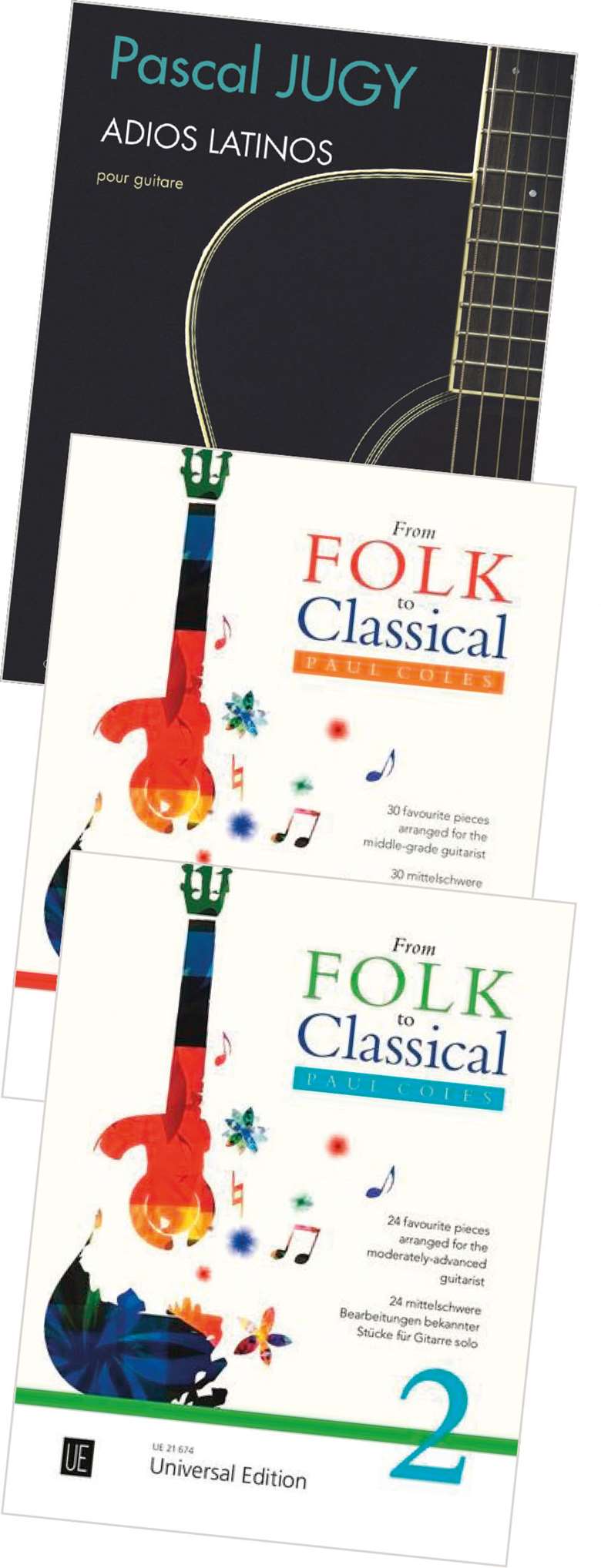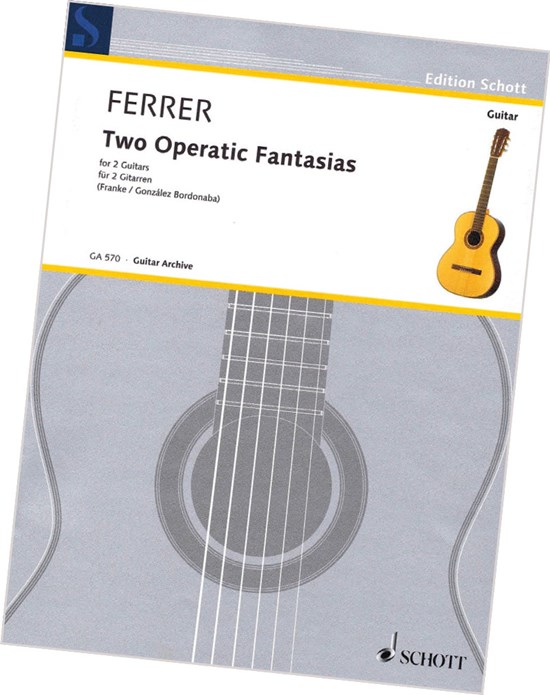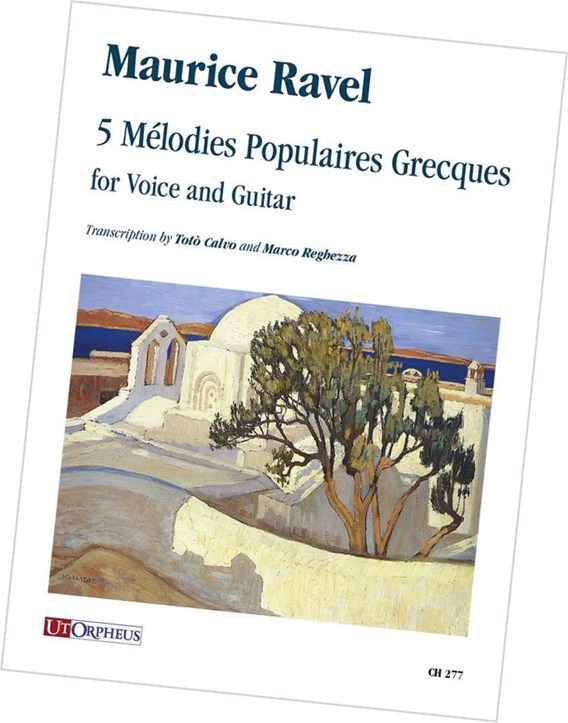Guitar Sheet Music Reviews: October 2018
Al Summers
Monday, October 1, 2018
Al Summers reviews Adios Latinos, From Folk to Classical One and Two, Two Operatic Fantasias, and Five Mélodies Populaires Grecques.

Adios Latinos
Pascal Jugy
CO 6806
Written for ten-string guitar, this edition has ossia examples of how to adapt it for a more usual six-string instrument – just half a dozen bars require rethinking. The original tuning has a traditional layout of the top six strings with the other four being a non-standard affair. As such, the reading is evidently for experienced players. The first 60 bars give an attractive melody, mainly with the thumb in the bass.
The techniques used are advanced but well considered and the syncopated rhythms are easy to read. Printing, on good stock, is a delight. Numerous harmonics at the centre of the piece are clearly marked. Other techniques required include rasqueado and tremolando. The opening bass melody reappears and an atmospheric cadence brings the music to a close, requiring a stretch unsuitable for small hands, on a beautifully voiced E-minor major-13th chord.
From Folk to Classical One and Two
Paul Coles
UE 21673/4
Discrepancy between languages (English and German) used on the front cover suggests some uncertainty on the part of the publisher, the first book's ‘middle-grade’ and the second's ‘moderately-advanced’ being translated as ‘mittelschwere’ on both covers. Rear cover blurb is more lucid, suggesting a grading of the books (3 to 4 and 5 to 6 respectively). A sense of progression through and between the books is evident. Paul Coles is well known as a successful composer and arranger, as is his fondness for scordatura, particularly on low strings – for example, dropped D, used here on many pieces.
Quality of paper, printing and presentation matches the arranger's skill. The brief introduction explains that some arrangements have been condensed but are still rewarding to play. This is true. Some liberties have been taken, the delicious anticipation/syncopation in ‘Ode To Joy’ being needlessly removed for instance, and some harmony is ‘authored’ rather than authentic, more paraphrase than transcription perhaps. While there is nothing wrong with that for those of us lacking purist tendencies, some scant attention paid to attributions is surprising for such an illustrious publisher as UE.
For example, ‘Amazing Grace’ is credited as ‘American Folk Song’ despite its British lyricist (and debatable melodic origins); ‘Twinkle, Twinkle, Little Star’ as ‘English Lullaby’ (its origins as a filthy French ditty perhaps deliberately avoided); ‘O Sole Mio’ as ‘Italian Love Song’ (with no mention of Eduardo di Capua); and ‘Mexican Hat Dance’ as ‘Mexican Traditional’ (Rubio also, as too often, overlooked as its composer) while other pieces have accurate and useful acknowledgements of their origins. Some setting is unusual, the melody in some pieces – such as ‘All Through the Night’ and book one's second version of ‘Scarborough Fair’ – being hidden in the two-voice arrangement: an excellent ‘find the tune’ game for pupils.
Slightly less useful is when the melody notes are sometimes inexplicably relegated to the lower accompaniment voice, as in an unnecessarily confusing setting of ‘To a Wild Rose’ where the arranger looks to be possibly unfamiliar with the original. As collections the volumes represent good value, providing 54 attractive pieces both new and old suitable for learning, sight-reading and as short light-concert items. Highlights include ‘In the Hall of the Mountain King’, a practical and effective ‘The Entertainer’, ‘Morning’ and, from book two, a workout on ‘Early One Morning’ with two variations exploring a minor version and tremolo technique.
Two Operatic Fantasias
José Ferrer
Schott GA 570

This Ferrer should not be confused (as Google does) with the actor famous for portrayal of Cyrano de Bergerac (who was a small child when the composer died). Very little is known about the composer. The guitar world owes a debt of gratitude chiefly to Simon Wynberg for the relatively small amount of Ferrer's works being reprinted in the last few decades. But for this he would perhaps linger as a mere footnote in musical history rather than being heard, played and enjoyed as one of the late 19th century's eminent composers for guitar.
Both written in the 1880s, these fantasias feature Verdi's La Traviata and Donizetti's La Favorite, the former about twice the length of the latter. The sections of each opera fantasised upon are clearly marked in the score. Set for two guitars, no individual parts are offered – so numerous page turns (or good memories) are required. Printing is superb, on excellent quality cream paper. Jens Franke and Marta Bordonaba have done careful and reverential work on editorial duties, producing an uncluttered score.
Difficulty level is not beyond good intermediate players although the stamina required is a little more demanding. With such robust idiomatic compositional techniques at his command and the material initiating these fantasias, Ferrer was almost certain to produce something hearty and appealing. This publication does not disappoint, adding a fine edition of two playable and substantial pieces to the duo canon.
Five Mélodies Populaires Grecques
Maurice Ravel
transcribed by Toto Calvo and Marco Reghezza
Ut Orpheus CH 277

Rather impressively, Ravel originally set these songs in less than 36 hours in order to help his friend who was due to give a lecture on Greek folksongs and needed the songs to help illustrate his points.
While titled as popular Greek melodies, all five songs actually originate from one specific Greek island – Chios – which is closer to Turkey than the Greek mainland and the influence of the Eastern music tradition can be heard throughout.
Originally composed for piano, Calvo and Reghezza have done a wonderful job of finding a way to make these songs work on guitar. Indeed, anyone listening to Ravel's original should be able to see how the texture of these pleasing songs lends itself well to guitar.
All are in standard tuning except the first, ‘Chanson de la mariée’, its scordatura very unusual: top string tuned up a minor third (appearing in every bar, frequently four or more times), second string down a semitone to B flat. The relentless semiquaver triplet movement allows few moments for the fretting hand to adjust the machine if (when) the top G flattens. Other than this caveat, highly recommended repertoire.

